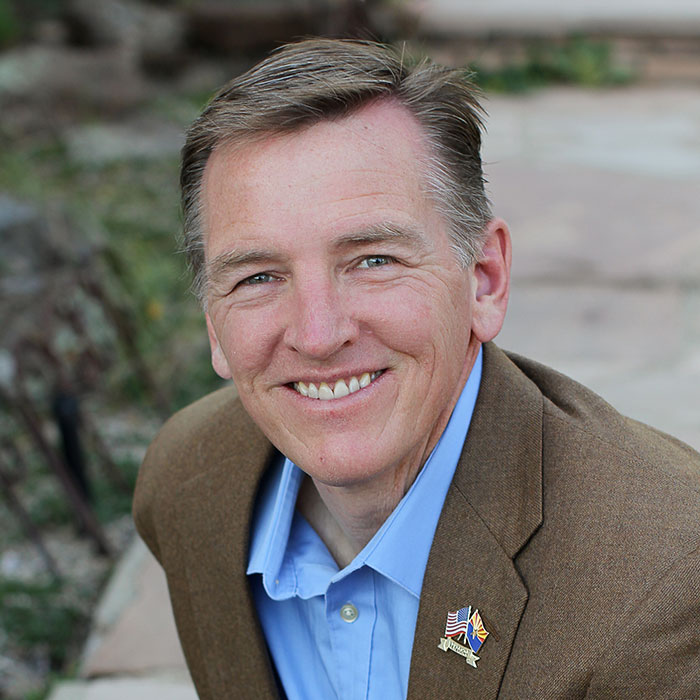Press Releases
Congressman Gosar Calls for Streamlined Regulatory Process for Renewable Energy Generation on Public Lands
Washington, DC,
June 2, 2011
WASHINGTON, DC – Today, the House Natural Resources Committee held an oversight hearing on “American Energy Initiative: Indentifying Roadblocks to Wind and Solar Energy on Public Lands and Waters, Part II.” This issue is critical to the economic viability of Arizona’s First Congressional District because some of the most promising areas for solar and wind energy development in this country and perhaps in the world. Over 69 percent of the land acreage in Arizona’s First Congressional District is public lands.
FOR IMMEDIATE RELEASE: June 2, 2011 CONTACT: Stefani Zimmerman or Hannah Loy 202-225-2315 Congressman Gosar Calls for Streamlined Regulatory Process for Renewable Energy Generation on Public Lands Industry Experts Testify on Barriers to Solar and Wind Generation Development Today, the House Natural Resources Committee held an oversight hearing on“American Energy Initiative: Indentifying Roadblocks to Wind and Solar Energy on Public Lands and Waters, Part II.” This issue is critical to the economic viability of Arizona’s First Congressional District because some of the most promising areas for solar and wind energy development in this country and perhaps in the world. Over 69 percent of the land acreage in Arizona’s First Congressional District is public lands. In his opening statement, Congressman Gosar highlighted the importance of addressing this issue to economic development in the State and in the First District: (excerpt) Arizona’s First Congressional District can be a model for energy-driven economic recovery in this country. Rural Arizona is rich with natural resources that provide for sound extraction and contains a diverse climate that is conducive to all forms of energy generation including traditional fossil fuels, hydro-electric, solar, and wind power. However, renewable energy development, like other resource use and energy sectors, are being plagued by excessive administrative costs, duplicative permitting, and lengthy and burdensome lawsuits filed by any or all environmentalist groups. New generation pilot and developmental projects are simply not getting off the ground. The government is requiring redundant, costly and unnecessary environmental reviews; making inconsistent permit approvals and denials; and in some cases, even completely halting the advancement of projects already underway. During the hearing, several of the witnesses representing the wind and solar industry testified about the excessive and onerous regulatory process which is stifling job creation. Susan Reilly, President and CEO of Renewable Energy Systems Americas INC.: Of relevance to this hearing is the fact that the level of regulatory uncertainty is much higher when developing projects on public lands, where the process can take twice as long as it would on private lands. As a result, there is a strong incentive to avoid public lands, which is borne out by the fact that only 1.4% of wind farms are currently located on public lands. Projects developed on public lands are subject to many more regulations; compounding the issue, these regulations often overlap and lack clarity as to which should take precedence. Roby Roberts, Vice President of Communications and Government Affairs for Horizon Wind Energy, LLC: The wind energy industry is also facing urgent challenges as a result of two documents released in February 2011 by the U.S. Fish and Wildlife Service (“the Service”). The first document is the Draft Land-Based Wind Energy Guidelines and the second is the Draft Eagle Conservation Plan Guidance. …Unfortunately, the draft land-based guidelines issued earlier this year by the Service differ in fundamental ways from the FAC recommendations and are unworkable for industry and will result in substantial delays or even abandonment of thousands of MWs of proposed wind projects. Rhone Resch, President & CEO – Solar Energy Industries Association: Our public lands have been used for a wide variety of economic and recreational activities over the last century, and solar must be one of those acceptable uses. In fact, three out of four Americans approve of solar energy development on public lands. BLM should not adopt the solar energy zone-only alternative presented in the Draft PEIS. Instead, BLM should adopt the Preferred Alternative identified in the Draft PEIS and work to make the solar energy zones themselves more attractive to project developers. Full Testimonies can be found at the http://naturalresources.house.gov/ Congressman Gosar questions witnesses about the federal regulatory compliance costs imposed on the wind and solar industry: Video can be found at: http://www.youtube.com/watch?v=wdzP4owIMY4 Congressman Gosar supports an all-of-the-above approach to addressing our energy needs. Renewable and alternative energy sources, such as wind, solar, geothermal, and hydropower are an integral part of any long-term energy strategy and there is tremendous potential to use our public lands and waters to help foster and expand their development. ### |

